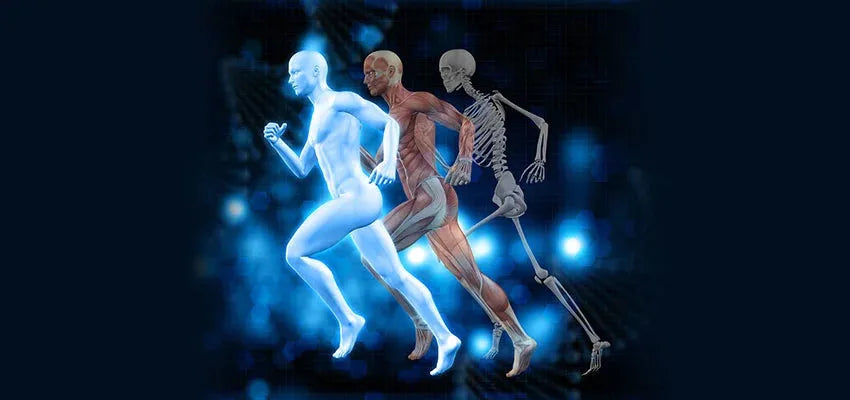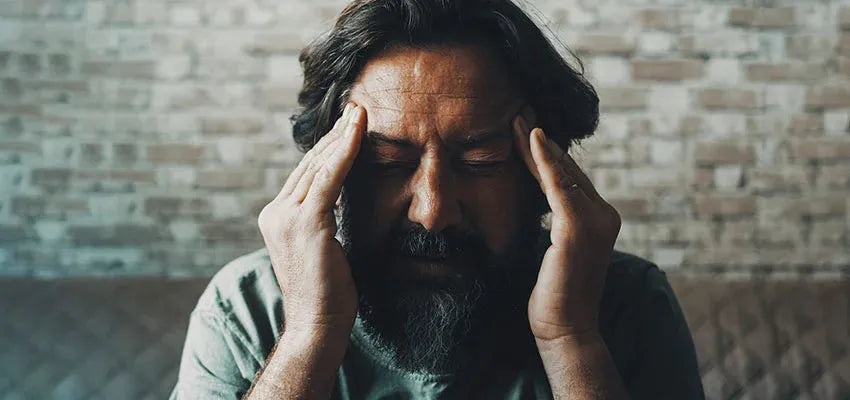
How to keep your muscles and bones healthy as you age
Our bodies constantly undergo bone modifications, with new bone cell production occurring to remove and replace the older ones. It is a rapid process during childhood in which new bones build faster and this process becomes slower as we age. As a result, during old age, the bones become brittle and weak, increasing the likelihood of fractures, osteoporosis, osteoarthritis, gout, and other bone-related disorders.
Taking care of the muscles and bones as one grows older can help in leading a more active and satisfying life. In this article, we will look at how to overcome bone-related issues with advancing age.
Factors affecting bone health
A few factors that could affect bone health as one becomes older, include:
- Low Calcium in your diet: A calcium-deficient diet will eventually lead to low calcium in your blood. As a result, diminished bone density, and early bone loss will take place.
- Less physical activity: Leading an inactive lifestyle may increase the risk of osteoporosis in individuals.
- Alcohol and tobacco use: Use of alcohol and tobacco affects the strength of the bones and contributes to bone-related disorders such as gout, osteoarthritis, and in rare cases, bone cancer.
- Obesity: Having more than an ideal weight (BMI or body mass index) will harm one's bone health. According to research, being overweight is a major factor for an increased risk of fractures.
- Race and family history: If you have a family history of fractures or osteoporosis, you are more likely to be susceptible to it as well.
- Hormone levels: Deficiency in the hormones such as thyroid, estrogen, and testosterone may contribute to bone loss. Prolonged, irregular, or absent menstruation may also have a negative impact on bone mass and density.
- Certain medications: Medications such as steroids (prednisone, cortisone, dexamethasone, etc.), may also negatively affect the bones of an individual. Other medications that affect bone health include antacids and anti-seizure medications.
Tips for healthy muscles and bones
Incorporating a few steps to improve your lifestyle may help you prevent or slow down bone and muscle loss with advancing age. Some of these measures are,
-
Including the following in your diet:
-
Calcium: A diet low in calcium can result in calcium deficiency. As a result, bone density will diminish and the risk of fractures will increase. The recommended dietary intake of calcium is 1000 mg per day in all individuals and may increase with age, i.e., 1200 mg for women of age 51 and above, and men of age 71 and above.
A few examples of a calcium-rich diet may include dairy products (milk, curd, cheese, yogurt), almonds, figs, broccoli, seeds (poppy, sesame, celery, and chia seeds), sardines, and canned salmon, beans, and lentils, whey protein, green leafy vegetables, tofu, and certain fortified drinks. -
Vitamin D: Vitamin D is required for calcium absorption in our body. The recommended dietary intake of vitamin D is 600 IU (International Units) daily and may increase with age, i.e., 800 IU daily after reaching the age of 65 and above.
A few examples of Vitamin D-rich diets include oily fish (salmon, trout, whitefish, and tuna), mushrooms, eggs, and fortified foods (milk and cereals). Furthermore, sunlight is the most important contributor to the body's production of vitamin D. Certain vitamin D supplements may also balance vitamin D requirements in the diet. -
Proteins : Protein is the building block of our bones. Therefore, increasing proteins in your diet may also help keep your bones strong and healthy. The recommended dietary intake of protein is 0.8 g per kg of body weight, in addition to plenty of vegetable and calcium intake.
A few examples of a protein-rich diet include lean meats (poultry and fish), and low-fat dairy products (eggs, beans, legumes, and nuts).
-
Calcium: A diet low in calcium can result in calcium deficiency. As a result, bone density will diminish and the risk of fractures will increase. The recommended dietary intake of calcium is 1000 mg per day in all individuals and may increase with age, i.e., 1200 mg for women of age 51 and above, and men of age 71 and above.
-
Exercising:Physical activity for balance and flexibility will help older people avoid fractures. Starting gently and sticking to particular physical exercises may help the elderly avoid turning inactive.
A few recommended exercises for the elderly include walking, jogging, toe raising, hip extension, sit-to-stand exercise, chair squats, yoga, light wall push-ups, etc. - Avoiding tobacco and alcohol use:Drinking alcohol and smoking may speed up bone loss in an individual. The recommended alcohol intake for women and men is one and two drinks, respectively after the age of 65 and above.
- Maintaining appropriate body weight:Underweight and overweight people both have issues with their bones and muscles. Underweight people have weak bones, which increases their risk of falls and fractures. Being overweight or obese is known to increase the risk of wrist, arm, and leg fractures. Thus, keeping track of one's weight is advantageous in leading a healthy and active lifestyle.
-
Getting screened regularly:It is advisable to get bone screening done on a regular basis after reaching a particular age, say 45 years and more. Women should get screened as early as 40 years, and men can get screened after reaching the age of 70 and above.
A few other factors that will require early bone testing may include the use of steroids, certain medical conditions such as arthritis or diabetes, and the onset of early menopause.
When one is in their 40s and beyond, taking the right steps can help maintain the overall health of their bones and muscles. Long-term prevention and treatment of many bone problems can be achieved by ensuring adequate calcium, protein, and vitamin intake together with appropriate physical activity. However, it is recommended to seek expert advice before beginning any form of physical exercise.


